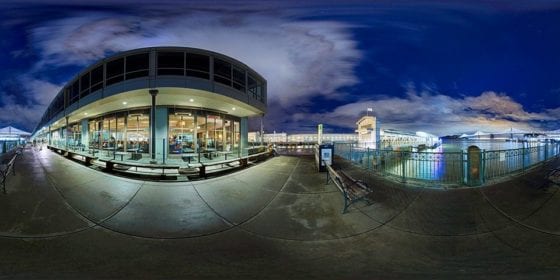VR and Real Estate
Real estate is one of the few sectors where potential customers don’t usually get a chance to see the end-product before making a purchase decision.
This is because, to seal a better deal, real estate customers have to invest early when the property is still under construction.
Now, imagine a scenario – where the buyer has to simply wear a headset, which presents 360-degree viewing of how their future residential or office space would look like – an experience like they are standing right in the middle of the property they are intending to buy!
Sounds impressive, right?
This is exactly how Virtual Reality (VR) technology is transforming the real estate sector with personalized, viewing experiences that are making things relatively easier for realtors to target prospective clients.
Let’s take a deeper look at the various ways in which virtual reality apps are empowering real estate developers to showcase their properties in a way that is closer to reality.
Following the Mobile App Trend
The exponential influx of smart devices and the availability of stable internet connection has transformed the way people shop these days.
Even though more and more people around the world are becoming increasingly confident shopping online, the same doesn’t quite apply for real estate.
The reason being, the money involved in a property purchase is pretty big, and sadly, there is no return policy.
Moreover, real estate consumers want to physically visit the property site before making a purchase decision.
This is where virtual reality can slip in.
VR apps, easily accessible through smart devices, can transport customers to their ‘would-be’ homes, where they can check out every single detail before deciding to buy the property.
This will possibly eliminate any ‘last-minute shocks’ when the customer walks in to make the final payment, because he or she has already seen the property through a VR headset, and has mentally decided to purchase it.
Moreover, with real estate, people often invest money in one country, even though they are living in another. For such customers, VR can play a crucial role by bringing real estate shopping closer to the e-commerce model, enabling these customers to finalize the real estate deal with one single visit to the actual property site.
Presenting Engaging Visual Projections and Experiences
A significant difference that virtual reality will bring to the real estate sector is the ability to project designs in 3D, as an alternative to the standard 2D view. This will dramatically enhance the visual appeal of a real estate space.
VR apps will also facilitate incredible value additions like virtual walks, which will enable real estate buyers to walk through every block and street in the neighborhood. This will provide the prospective buyers with a ‘real’ view of the locality they are intending to move in.
Adding More Value
Often, real estate buyers wait for possession of the property, before they start planning the interior designs and furniture.
Since virtual reality apps render almost real-life simulations, prospective buyers would be able to plan their interiors even before taking the possession.
Virtual reality, being an accurate replica of the property space, would help customers to try out different furniture types, lighting arrangements, fittings, and colors, which add value, and enhance the overall engagement between the buyer and the property.
Like with every business, realtors who enter early with this revolutionary technology-powered service, will without a doubt have a clear-cut competitive advantage over rival companies.







GIPHY App Key not set. Please check settings